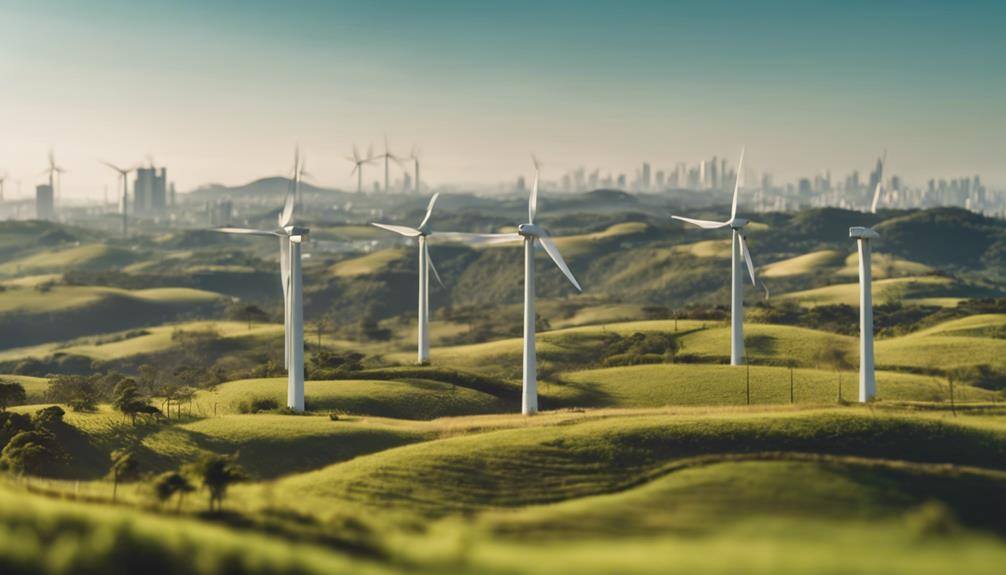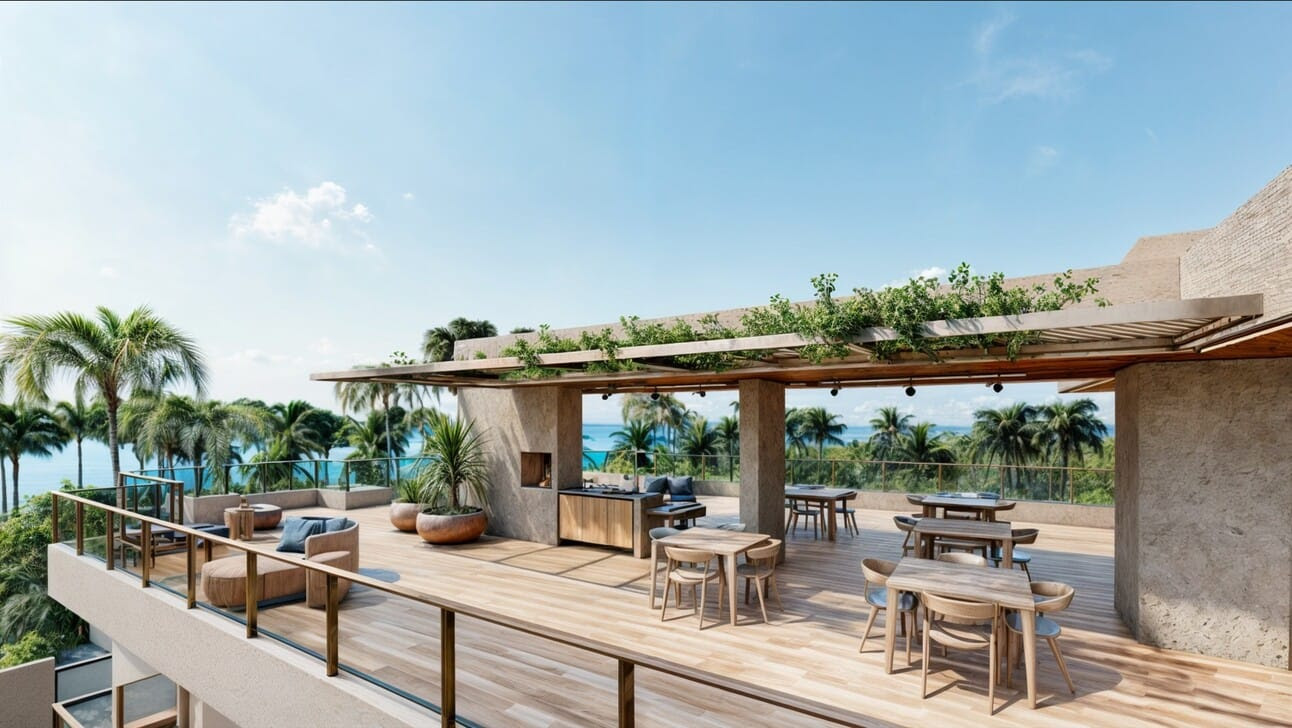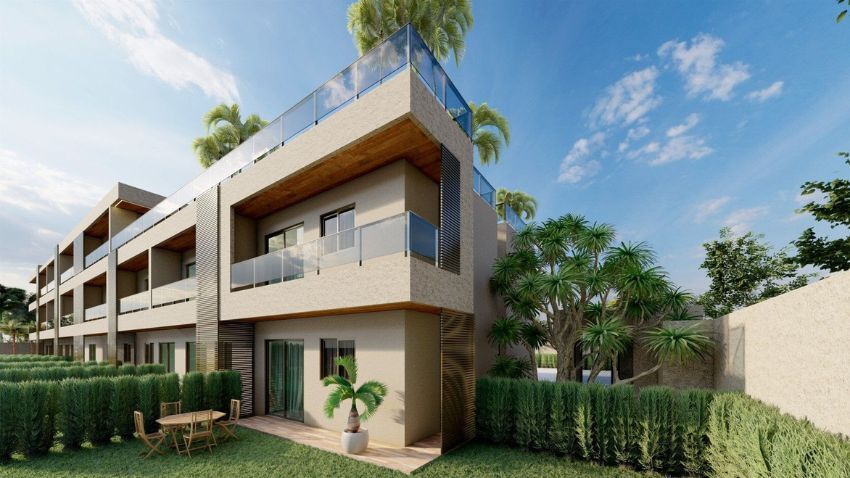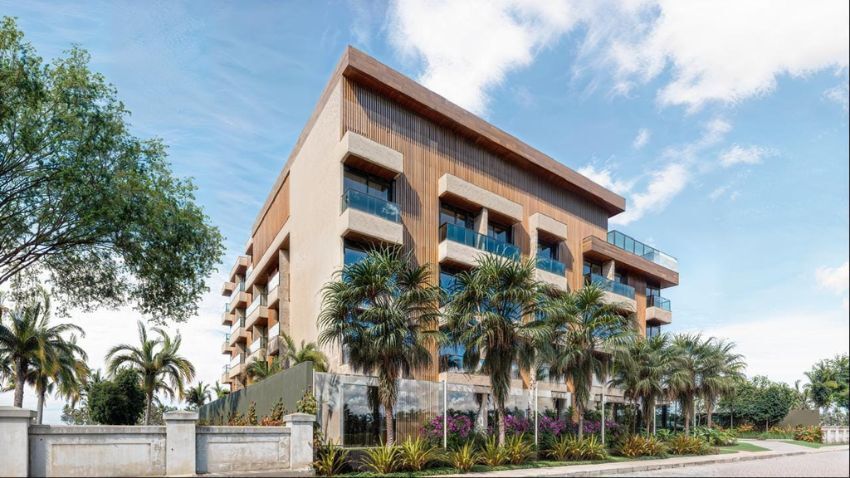Paved, Walkable & Organized: Welcome To The "Acceleration Phase"
If you were to visit Porto das Dunas today, you would feel something that is hard to capture in photos……it feels organized.Traffic flows smoothly....

As you consider investing in Brazil's burgeoning wind power sector, it's essential to understand the landscape of opportunities and challenges that await. Brazil's commitment to expanding its renewable energy footprint presents a fertile ground for strategic investments, particularly in wind energy. By partnering with established players, whether local or international, you'll gain invaluable insights and easier navigation through complex regulatory environments. Such collaborations can greatly mitigate initial risks and enhance your project's viability. Now, imagine leveraging these partnerships to not only gain a foothold but also drive innovation and sustainability in one of the most promising renewable energy markets in the world. What specific strategies should you employ to maximize your investment's potential?
Explore partnerships with established companies like Equinor, Neoenergia, EDP, and Engie to leverage local expertise and resources.
Consider financing options such as bank loans, green bonds, and funding from development banks like BNDES with favorable terms.
Focus investments in the Northeast region, where 80% of Brazil's wind farms are concentrated and growth potential is significant.
Stay updated on regulatory changes since 2015 that encourage larger-scale projects and offer higher efficiency gains.
Evaluate participation in planned projects, including Petrobras's seven offshore wind projects with a combined capacity of 14.5 GW.

Brazil's wind sector, concentrated heavily in the Northeast, encompasses over 890 wind farms across 12 states. This region alone boasts an impressive installed capacity, contributing greatly to Brazilian electricity. You'll find the heart of Brazilian wind power here, with a production capacity exceeding 5 GW, underscoring the region's critical role in the national energy mix.
As you explore further, you'll discover that the Brazilian Wind Power Association alongside the Energy Research Office frequently highlights the wind energy sector's rapid expansion. The nation aims to surge past 44 GW of installed wind capacity by 2028, making wind power plants one of the most dynamic renewable energy sources in Brazil. This growth isn't just about numbers; it's about integrating more green energy into the Brazilian lifestyle and reducing reliance on traditional power sources.
Moreover, looking ahead, the potential for offshore wind farms in Brazil is immense, promising to further diversify the energy portfolio. This shift isn't just beneficial for the environment; it's a strategic move to bolster the robustness of Brazilian electricity supplies, ensuring that you're investing in a sector poised for sustainable growth and innovation.
Since 2015, regulatory adjustments have significantly influenced the scale and nature of wind power projects in Brazil, making it essential for you to understand these changes to effectively invest in the sector.
Initially, the shift to increase the limit for incentives from 30 MW to 300 MW has propelled Brazil's wind power sector towards larger-scale projects. This pivotal move not only expanded project sizes but also enhanced the overall competitiveness and economic attractiveness of investments in this green energy sphere.
You'll find that these regulatory changes have been a significant driver in reshaping the landscape. As project sizes increased, the potential for higher output and efficiency gains became apparent, aligning with global trends towards more substantial renewable installations. This evolution in the regulatory framework supports your strategic decision-making process by highlighting where the most lucrative opportunities may lie.

Understanding the regulatory framework now positions you to explore the key investment opportunities available in Brazil's wind power sector. The country's wind energy sector is booming, expected to hit 29 GW by the end of 2023 and aiming for over 44 GW by 2028. This growth is primarily fueled by the abundant opportunities in both onshore and offshore wind projects.
In the onshore arena, Brazil's Northeast region, particularly states like Bahia and Rio Grande do Norte, hosts 80% of the wind farms. Here, you'll find 86 planned projects worth around $36 billion, showcasing significant growth potential. These areas are ripe for investments, giving you a chance to tap into the thriving Brazilian energy sector.
Turning to offshore ventures, the scenario is equally promising. Petrobras's plan for seven offshore wind projects, with a combined capacity of 14.5 GW, underscores the vast potential awaiting exploitation. Additionally, the active participation of global giants such as Equinor, Neoenergia, EDP, and Engie in these projects highlights the robust confidence in Brazil's renewable energy industry. This is a golden opportunity for you to be part of Brazil's ambitious expansion in wind power generation.
Exploring project financing options, you'll find traditional bank loans, project bonds, equity financing, and green bonds readily available to support your investment in Brazil's wind power sector. Development banks, particularly BNDES, are pivotal, offering loans with advantageous terms and rates that can greatly ease the financial burden of launching wind projects. These institutions are committed to fostering sustainable energy development, aligning with both environmental goals and economic benefits.
Moreover, international financial institutions are stepping in to fund wind energy projects in Brazil. Their involvement underscores the global commitment to sustainable energy and provides additional avenues for securing necessary capital. Renewable energy funds and private equity investors are increasingly active, drawn by the sector's potential for growth and sustainability. This variety of financing options creates a robust environment for investing in wind energy.
Green bonds, specifically, represent an exciting opportunity. These bonds finance projects that have positive environmental impacts, including wind energy developments. By choosing green bonds, you're not only investing in a financially sound project but also contributing to a more sustainable future. The diverse array of financing options available ensures that your investment in Brazil's wind power sector is both feasible and forward-thinking.

After considering the diverse financing options available, let's now examine the market growth potential of Brazil's wind power sector. This sector isn't just expanding; it's surging forward with robust growth projections that should capture your attention. By 2023, the sector is expected to swell to 29 GW and doesn't stop there—it's projected to exceed 44 GW by 2028. This rapid expansion is a clear signal for potential investment opportunities.
Brazil houses 890 wind farms across 12 states, with a staggering 85% concentrated in the Northeast. This extensive deployment underscores the significant role wind power plays in Brazil's energy mix, contributing an anticipated 13.2% to the national grid. Such a hefty contribution highlights the sector's critical position within Brazil's renewable energy matrix.
The parallel boost in utility-scale solar projects, growing by 40.9% in 2021 alone, complements the wind sector, together painting a promising picture for the entire renewable portfolio. As you look to diversify or expand your investment profile, consider how deeply intertwined wind energy is with the broader objectives of enhancing sustainable energy sources in Brazil. Here lies a fertile ground for planting your investment seeds, where the growth potential is both evident and inviting.
Forming strategic partnerships in Brazil's wind power sector offers you important access to local expertise, essential resources, and in-depth market knowledge. By teaming up with local entities, you're not just investing in renewable power; you're embedding yourself within a network that understands the nuanced regulatory requirements and cultural dynamics essential for successful wind energy projects in Brazil.
Partnering with seasoned players enhances your project's credibility and can greatly speed up the generation capacity of your ventures. These collaborations often lead to shared costs and risks, making it a more sustainable entry strategy into the competitive wind power market.
Leveraging these strategic partnerships positions you at the forefront of Wind energy in Brazil, ensuring you maximize every opportunity in this burgeoning sector.

Mitigating risks in Brazil's wind power sector requires strategic approaches tailored to its unique market and environmental challenges. As you immerse yourself in this sector, you'll find that diversifying your investments across various wind projects isn't just recommended; it's vital. This strategy spreads your risk and enhances the resilience of your portfolio, especially as the demand for renewable sources like wind and solar escalates.
Brazil's growing emphasis on renewable electricity means more wind plants are coming online, with an expected increase in GW of installed capacity. To stay ahead, you'll need to leverage advanced forecasting technologies. These tools improve your risk assessment and refine operational decision-making by predicting fluctuations in wind power generation with greater accuracy.
Additionally, keeping a close eye on market trends, regulatory shifts, and weather patterns is essential. This proactive monitoring helps you adapt to changes swiftly, safeguarding your investments. Don't go it alone; collaborating with seasoned risk management professionals can provide customized strategies that are essential in understanding the complexities of the Brazilian wind power landscape.
Brazil's wind power sector greatly reduces environmental degradation by not emitting pollutants or greenhouse gases during operation. When you invest in wind power projects here, you're directly contributing to a significant cut in greenhouse gas emissions. This proactive choice not only battles climate change but also aligns with Brazil's ambitious sustainability goals.
Wind farms, pivotal in achieving a cleaner energy mix, operate without releasing harmful air pollutants. This shift is essential as the world shifts towards renewable energy sources, reducing reliance on fossil fuels known for their adverse environmental impacts. Brazil's commitment to wind energy highlights its role in this global shift, setting a precedent for other nations.
Moreover, your investment supports the expansion of an industry that's vital for the country's environmental and economic health. By channeling funds into wind power, you help increase the capacity for generating renewable energy, fostering a sustainable future. This move not only safeguards the planet but also positions you at the forefront of a thriving, responsible sector. You're not just investing in energy; you're investing in a cleaner, sustainable future for everyone.

Technological advancements are revolutionizing Brazil's wind power sector, greatly enhancing turbine efficiency and energy output. Innovations such as larger rotor diameters and taller towers are pushing up the capacity factors, allowing wind projects to generate more power from the same resources. You'll find that these improvements not only boost production but also enhance the overall efficiency of wind turbines.
Advanced control systems and predictive maintenance are pivotal in this transformation. These technologies improve the reliability and performance of wind turbines by anticipating potential failures and optimizing operations. As a result, downtime is minimized, and lifespan of the equipment is extended, ensuring you get the most out of your investment.
The integration of data analytics and machine learning into the sector is another game-changer. These tools analyze vast amounts of operational data to fine-tune wind farm performance. This maximizes energy production and increases the profitability of wind projects.
Ongoing research and development play an essential role in sustaining these technological strides, continually pushing the boundaries of what's possible. This relentless pursuit not only advances the technology but also amplifies the competitiveness of Brazil's wind power sector on a global scale.
To ensure peak performance, you'll need to implement resilient monitoring and evaluation techniques in the wind power sector. Start by examining key wind farm performance metrics such as capacity factor and availability. These indicators help you understand how efficiently your turbines convert wind into energy and how often they're operable, respectively.
Your evaluation methods should include thorough data analysis. Delve into metrics on wind speed, turbine output, downtime, and maintenance costs. This analysis not only pinpoints performance trends but also identifies areas for improvement. By comparing actual energy production with your initial energy production estimates, you can gauge the accuracy of your projections and the effectiveness of your turbines.
Don't underestimate the power of technology in this process. Remote monitoring systems are essential—they use sensors and software to gather real-time data on your turbines. This real-time monitoring allows for immediate responses to any operational issues, optimizing uptime and efficiency.
You've explored the dynamic landscape of Brazil's wind power sector, understanding the regulatory framework and pinpointing key investment opportunities.
By leveraging strategic partnerships and innovative financing options, you can navigate this competitive market effectively.
Always consider the environmental impacts and stay updated with technological advancements to enhance your project's viability.
Remember, effective risk management and diligent monitoring are essential.
Invest wisely, and you'll contribute to Brazil's renewable energy future while potentially reaping significant rewards.


Brazil Beachfront is your trusted source for uncovering the incredible opportunities along Brazil’s breathtaking Northeastern coastline. With Brazil’s economy on the rise and its middle class growing rapidly, the market offers an undeniable upside for offshore investors.
The newsletter also showcases past projects, providing readers who have purchased real estate with detailed construction updates to keep them informed every step of the way. From the lifestyle appeal of Brazil’s pristine beaches to the financial advantages of investing in this high-growth market, Brazil Beachfront delivers the insights and updates needed to capitalize on one of the world’s most dynamic real estate opportunities.

If you were to visit Porto das Dunas today, you would feel something that is hard to capture in photos……it feels organized.Traffic flows smoothly....

If you’ve been following Brazil Beachfront for any length of time, you already know Porto das Dunas has been one of our most closely watched markets...

Two Saturdays back, I went live with hundreds of you to unveil what I consider one of the most compelling investment opportunities I have shared to...